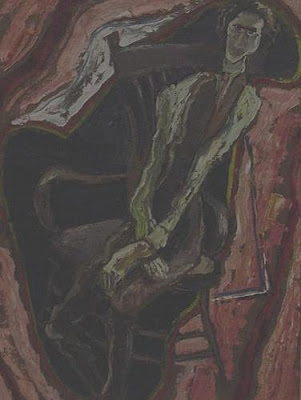
Here are the main characters for this week here at Fifty Two Pieces. Annette Kaufman sits in a chair posing for Milton Avery who is painting her portrait. Between them stands Louis Kaufman, Annette's husband and preeminent violinist – they are all posing for the photographer of this image. As mentioned on Thursday's post, the Kaufmans purchased the very first painting Milton Avery ever sold. They continued to collect his paintings as well as those from many other artists. Since Louis' death in the 1990's, Annette, through their foundation, has given much of their collection of art and scores to museums and libraries.
Here are a few more of Avery's portraits of Annette to compare with the one here at the Portland Art Museum – the first shown below.



And here's another tribute to Annette Kaufman – an oil done by Lawrence Lebduska. It hangs in the National Portrait Gallery in Washington, DC.
















